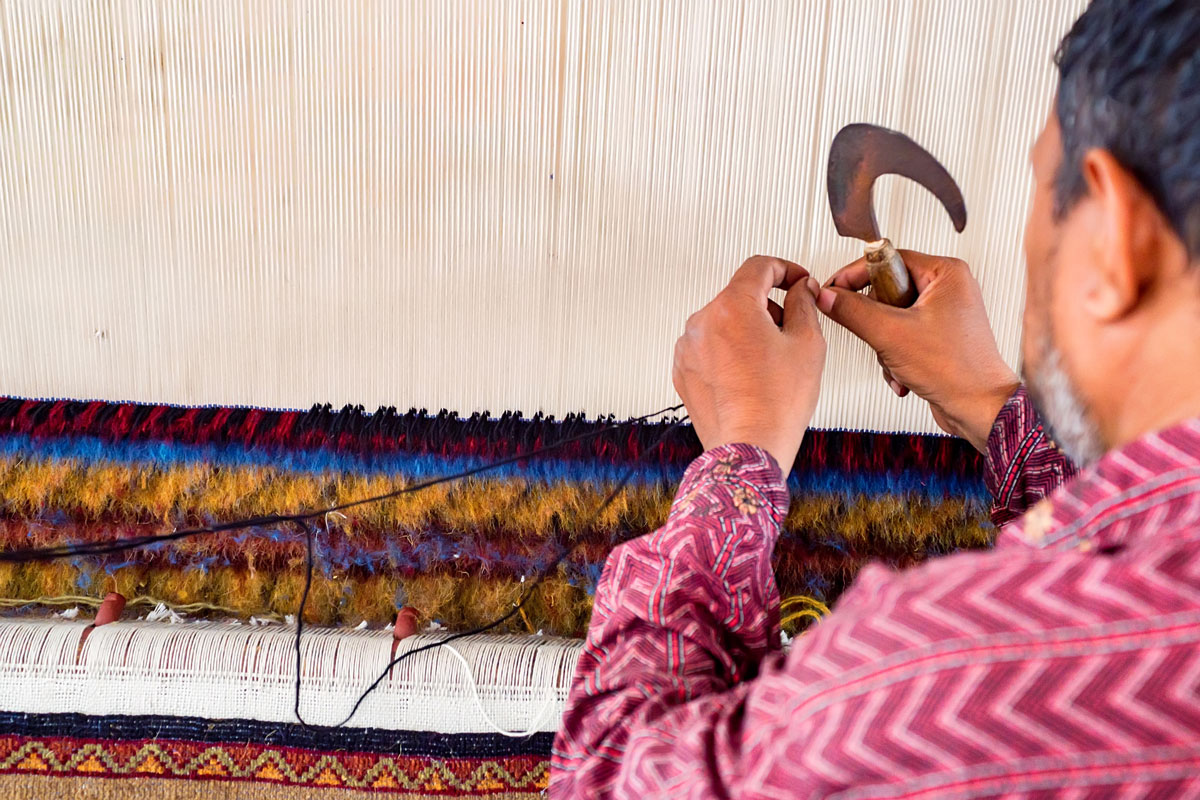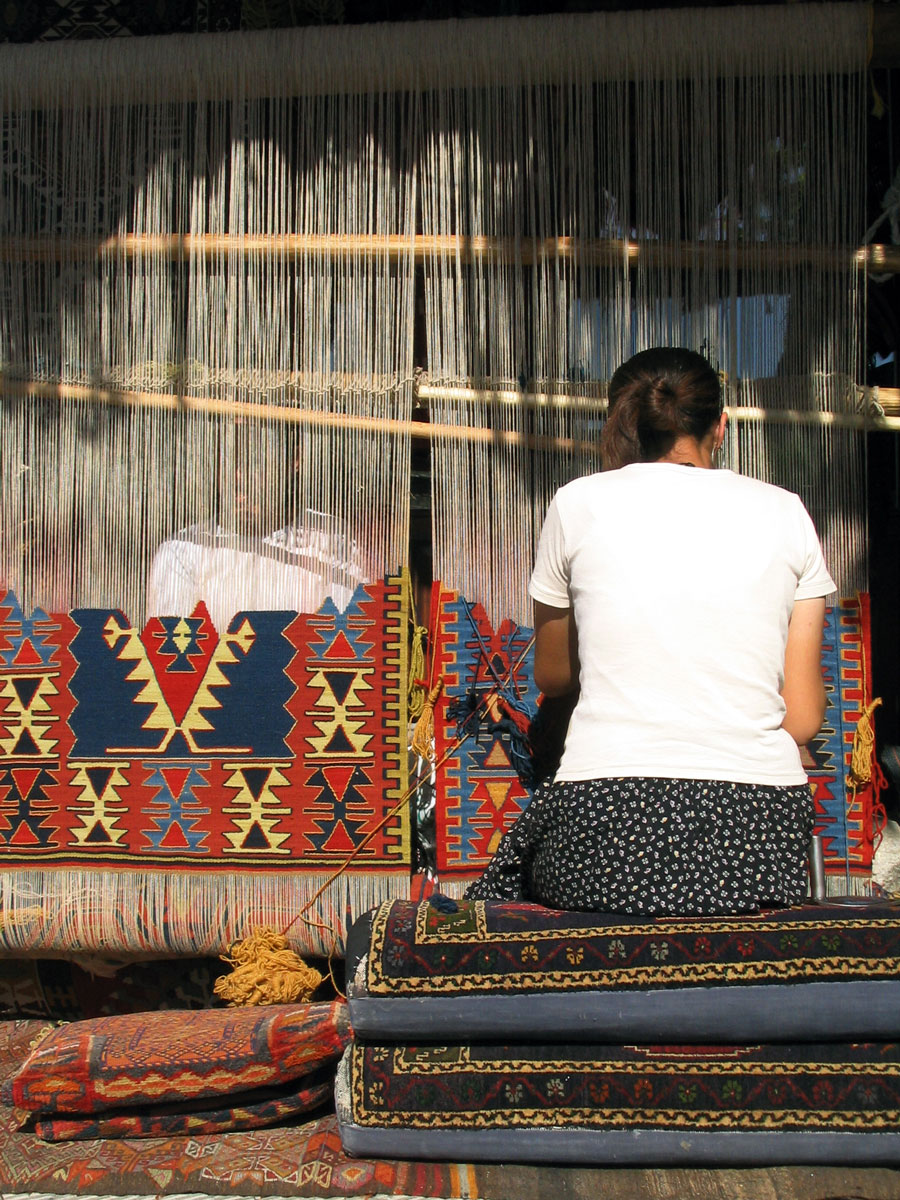The actual Crafting of Oriental Rugs
The knotting of a rug is based on centuries of tradition. Thus, different knotting techniques have been developed across the different regions. Basically, four different knot types can be distinguished. The symmetrical Knot is robust and originates from the Turkish area. The asymmetrical knot allows a denser knotting and is also called Persian knot. There are also Jufti and Tibetan knots, but these are now called are less widespread.
An experienced knotter crafts 10,000 knots per day on average per day. The knotting itself is usually done by women working on their own loom at home. Thus, the crafting of a fine carpet with 500,000 knots per square meter and an area of 6 square meters (3x2m) takes about 300 working days. This gives an idea of the manual effort required for a handmade carpet. In this context Persian rugs are still very cheap. A comparable Nain 9La (3x2m) with almost 500,000 knots costs only slightly more than 3,000 € in sales (price reference: Nain Trading), despite its over 300 working days of production time.

Knotting a rug - the pattern is visible only after the last step
The knotting density is an important indicator for the effort of a handmade carpet. It is measured per square metre and also provides information on the fineness and durability of a carpet. Very coarse carpets start at around 50,000 knots per square metre, while the finest carpets, such as Tabriz 70Raj, have a knot density well over 1,000,000 knots per square metre. Such pieces are made by highly experienced master knotters and are also interesting for collectors. The knot density of a carpet can be quickly estimated with the help of its reverse side. The number of knots is multiplied by one hundred over a length of one centimetre and then squared. The result is the approximate knot density per square meter. It should not be forgotten, however, that the number of knots can vary with knots running up and sideways and is not always the same across the carpet surface.
| Knots per Square Meter (Square Feet): | |
|---|---|
| Very Coarse | 40.000-80.000 (3,716 -7,432) |
| Coarse | 80.000-120.000 (7,432 - 11,148) |
| Medium | 120.000-240.000 (11,148 - 22,297) |
| Somewhat Fine | 240.000-360.000 (22,297 - 33,445) |
| Fine | 360.000-500.000 (33,445 - 46,452) |
| Very Fine | 500.000-1.000.000 (46,452 - 92,903) |
| Extraordinary Fine | 1.100.000 (102,193) or higher |
After knotting, the rug is finally cut by the loom and finished for the next step - trimming or polishing.
Rugs with a particularly high knot density
Here you will find a few examples of exclusive Persian rugs which were particularly elaborate in their knotting and with a knotting density exceeding 500,000 knots per square metre could only be made by experienced master knotters. Such pieces take more than a year to produce for a single weaver and therefore have a certain rarity value.

Woman weaving kilim rugs - the pattern is immediately recognisable
Production in Detail
Centuries-old tradition is the basis of almost every Oriental rug. Long ago Persian rugs were already considered the highest luxury...
Read more
Whether sheep wool, silk or cotton, the material of a hand-knotted oriental rug usually comes from nature...
Read more
The colours of many high-quality oriental carpets still originate today from plants and minerals...
Read more
No matter how detailed the pattern may be, some knotters still craft the rug from memory today...
Read more
An art that has been perfected over many centuries and is still unrivalled today...
Read more
Colour facets, durability, level of detail are only a few of the differences to machine-made rugs...
Read more





